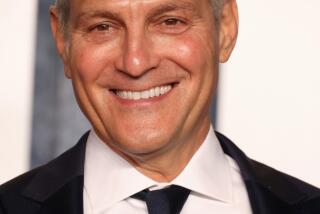Leading Figures in Rise and Collapse of Enron
- Share via
Here are some of the key players in the Enron Corp. saga, former executives who are expected to figure large in the ongoing federal investigations into the company’s collapse.
* Kenneth L. Lay. He built the company from an obscure natural gas pipeline firm into a new kind of energy company. He was chief executive from 1985 to February 2001 and remained chairman until the company’s collapse. He stepped back in as CEO in August 2001.
Lay, 60, who has a doctorate in economics from the University of Houston, saw the promise of natural gas deregulation in the 1980s and electricity deregulation in the 1990s. Enriched by Enron’s early successes, he became a big political fund-raiser, an advisor to both Bush administrations and an architect of national energy policy.
Through Enron’s stunning downward spiral, two views of Lay emerge: He was an isolated statesman, unaware of financial trickery perpetrated by underlings. Or he was a hands-on manager who knew what was going on.
Lay has refused to testify before Congress.
* Jeffrey K. Skilling. He took over as chief executive in February 2001, only to resign in August, citing personal reasons.
Skilling, 48, said the decision to quit had “nothing to do” with Enron, but many in and out of the company wondered why he would walk away from a job he had long coveted.
Lay brought Skilling to Enron in 1990 from consulting firm McKinsey & Co., at which Skilling had handled the Enron account. Enron had hit a rough patch because of plummeting natural gas prices, and Skilling had a vision of Enron as a nimble trading company that didn’t need hard assets to make money.
Skilling was named Enron’s president in 1996.
Skilling signed off on the creation of many of the off-balance-sheet financial deals that Enron allegedly used to hide debt. Skilling has insisted that the deals were legitimate and were used to lower risk for Enron and its shareholders.
In testimony before Congress this year, Skilling said he was unaware of any accounting problems at the company.
* Andrew S. Fastow. He joined Enron in 1990 from Continental Bank in Chicago and became chief financial officer in 1998.
Fastow, 40, helped Enron raise the huge sums it needed in its quest to dominate energy trading. He is believed to have engineered Enron’s many off-balance-sheet financial partnerships.
Fastow managed two of the partnerships, LJM Cayman and LJM2 Co-Investment, named using the initials of his two children and his wife. Investor concern over potential conflicts between Fastow’s role as an Enron executive and as a partnership manager caused Fastow to resign his manager duties in summer 2001.
On Oct. 16, Enron reported a surprise $638-million quarterly loss, partly related to the partnerships that also cost the company $1.2 billion in shareholder equity. On Oct. 24, a day after Lay expressed “the highest faith and confidence in Andy” in a conference call with investors and analysts, Fastow was ousted from the job.
Enron has said Fastow reaped at least $30 million in fees for managing the partnerships. A Fastow spokesman has said the arrangements were created with the full knowledge and approval of Enron’s board of directors.
* Jeffrey McMahon. He was mentioned in Enron executive Sherron S. Watkins’ Aug. 22 memo to Lay as one of the top executives that Lay should quiz to see whether her account of financial shenanigans was true.
McMahon, 41, a former Arthur Andersen employee who joined Enron in 1994, was treasurer and executive vice president of finance in 2000 when he complained about the off-the-books deals that Fastow helped engineer. McMahon then moved to an Enron backwater as president of a small subsidiary that served industrial customers.
More to Read
Inside the business of entertainment
The Wide Shot brings you news, analysis and insights on everything from streaming wars to production — and what it all means for the future.
You may occasionally receive promotional content from the Los Angeles Times.










